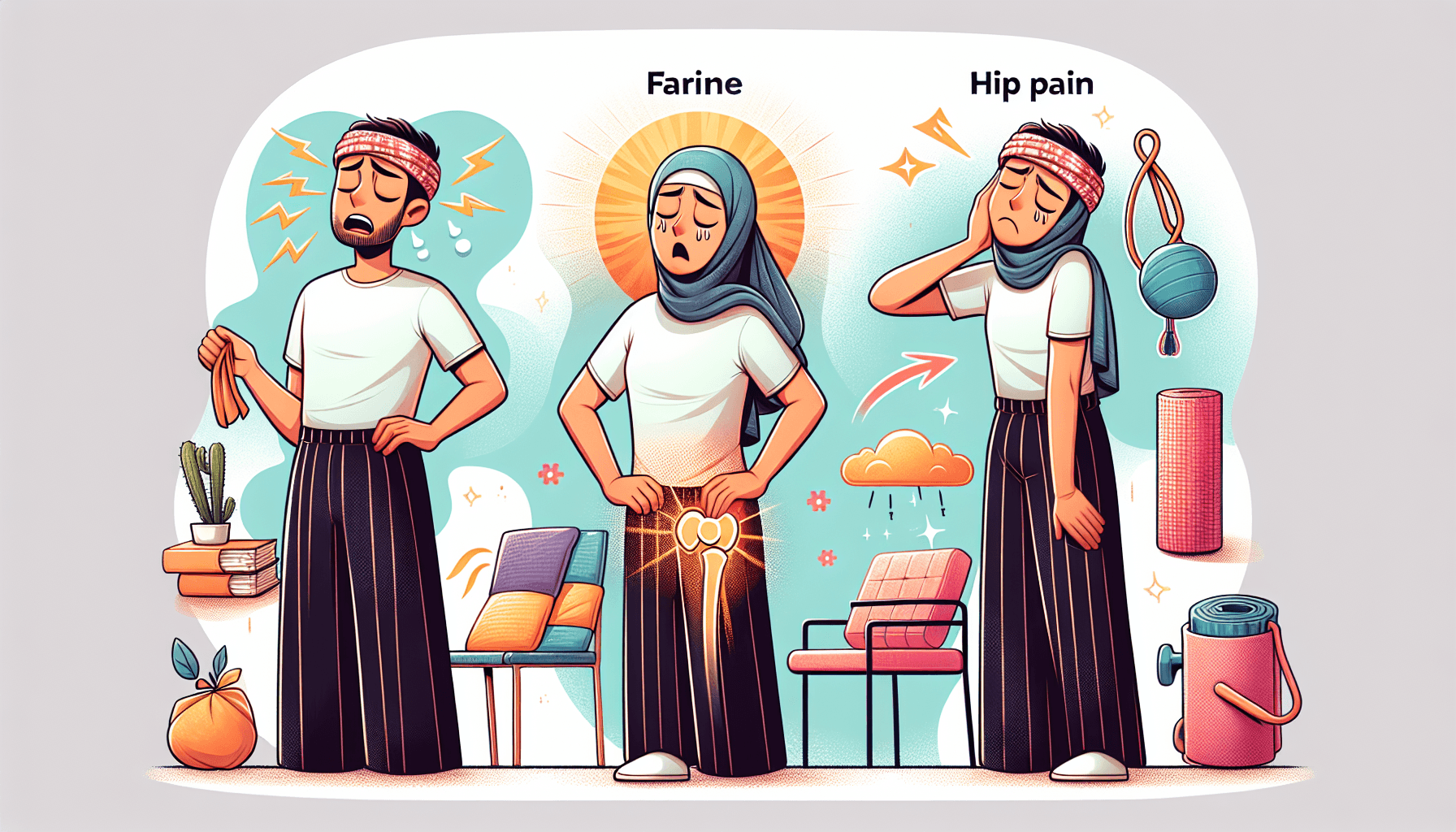Dealing with hip pain can be a debilitating experience that affects various aspects of your life. Whether it’s due to injury, arthritis, or other underlying conditions, hip pain can interfere with your daily activities and leave you feeling fatigued. If you’re struggling with managing fatigue alongside your hip pain, this article will provide you with some helpful tips and strategies to find relief.
1. Listen to your body
When you’re experiencing hip pain, it’s essential to listen to your body and not push yourself too hard. Understand the limits of your pain and discomfort and adjust your activities accordingly. It’s okay to rest and take breaks when needed. Pushing through the pain can worsen fatigue and prolong the healing process.
2. Practice gentle exercises
Engaging in regular exercise is vital for managing hip pain and preventing fatigue. However, it’s essential to choose exercises that are gentle on your hips. Low-impact activities like swimming, cycling, and walking can help improve muscle strength and flexibility without putting excessive stress on your joints. Consult with a physical therapist or healthcare professional to create a customized exercise plan that suits your needs.
3. Maintain a healthy weight
Excess weight can put additional strain on your hips, exacerbating pain and fatigue. By managing your weight within a healthy range, you can reduce the stress on your hip joints and improve your overall mobility. Incorporate a balanced diet and regular exercise into your routine to achieve and maintain a healthy weight.
4. Use assistive devices
Incorporating assistive devices can help ease the stress on your hips and reduce fatigue. Consider using a cane or walker to assist with mobility and take pressure off your affected hip. Talk to your healthcare provider about the most suitable assistive devices for your specific condition.
5. Optimize your sleep environment
Getting enough restful sleep is crucial for managing fatigue. Create a comfortable sleep environment that promotes relaxation and minimizes strain on your hips. Invest in a supportive mattress and pillow that provide adequate cushioning and keep your spine aligned. Additionally, try to maintain a consistent sleep schedule and establish a relaxing bedtime routine to improve your sleep quality.
6. Practice stress management techniques
Chronic pain and fatigue can significantly impact your mental well-being. Managing stress through various techniques such as deep breathing, meditation, or engaging in hobbies can alleviate psychological strain and improve your overall energy levels. Explore different stress management techniques and find what works best for you.
7. Seek professional help
If your hip pain and fatigue persist or worsen despite self-care measures, it’s essential to seek professional help. Consult with a healthcare provider who specializes in hip pain to evaluate your condition and develop a comprehensive treatment plan. They may recommend physical therapy, medication, or other interventions tailored to your specific needs.
In summary, managing fatigue alongside hip pain requires a multifaceted approach. Listen to your body, engage in gentle exercises, maintain a healthy weight, utilize assistive devices when necessary, optimize your sleep environment, practice stress management techniques, and seek professional help when needed. By implementing these strategies, you can effectively manage fatigue and improve your overall well-being.
For more information on back and hip pain treatment, visit Eastside Ideal Health.

